Understanding Custom Clear Tarps: Benefits and Uses
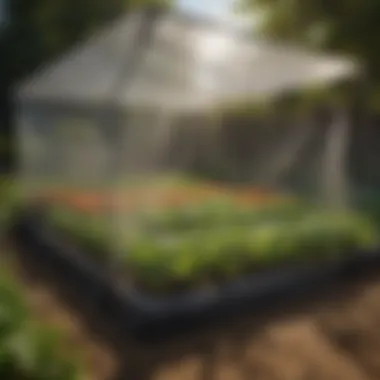
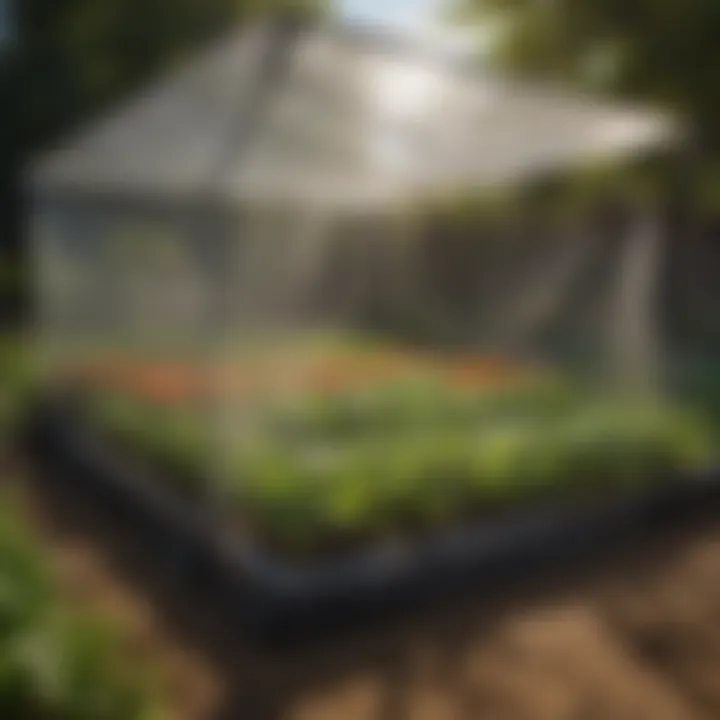
Intro
Custom clear tarps have become an indispensable tool in the realm of agriculture and horticulture. Their strategic use demonstrates how a seemingly simple product can significantly influence productivity and sustainability in farming. This article navigates through the various applications, benefits, and considerations surrounding these tarps, offering insights specifically crafted for both novice farmers and seasoned agronomists.
Topic Overview
Definition and Importance
Custom clear tarps are transparent covers primarily made from durable plastic materials. Their design serves to allow sunlight to penetrate while safeguarding crops from adverse weather conditions, pests, and diseases. The importance of these tarps lies in their ability to foster a controlled microclimate. Such environments can enhance photosynthesis, which in turn boosts plant growth. Farmers and gardeners can leverage these advantages to optimize their cultivation practices, ultimately leading to improved crop yields.
Brief History and Evolution
The utilization of tarps in agriculture dates back several decades. Initially, farmers used basic plastic sheets to provide minimal protection for their plants. Over time, advancements in material science and agricultural practices led to the development of custom clear tarps with specific properties such as UV resistance and longevity. These innovations have made them more effective, allowing farmers to tailor them according to their crop needs. Today, they have evolved into versatile tools that can aid in various agricultural processes, from seed germination to full crop growth.
Key Techniques and Innovations
Sustainable Farming Practices
The integration of custom clear tarps into sustainable farming practices plays a crucial role in reducing resource waste. Farmers can utilize these tarps to create microclimates, minimizing water evaporation during warm months. Furthermore, by promoting soil health through solarization, tarps can help in weed control without requiring chemical herbicides. This synergy between clear tarps and sustainable agriculture echoes the broader push towards eco-friendly practices in the farming community.
Advanced Agronomic Technologies
Recent innovations in agronomic technologies have further enhanced the efficacy of custom clear tarps. For instance, the incorporation of smart sensors in tandem with tarps can provide real-time monitoring of climate conditions underneath the tarps. This data-driven approach allows farmers to make informed decisions on irrigation and fertilization, optimizing their inputs and maximizing outputs. Such advancements underscore the evolving relationship between traditional techniques and modern technology in agriculture.
Practical Applications
Step-by-Step Guides
Using custom clear tarps effectively requires some planning and execution. Here’s a simple step-by-step guide to laying them out:
- Select the Area: Choose a section of your garden or farm that requires coverage for specific crops.
- Prepare the Ground: Clear debris, and if necessary, enrich the soil before placing the tarp.
- Measure and Cut: If you have a custom tarp, measure your area and cut the tarp to fit, ensuring adequate coverage.
- Secure the Tarp: Use stakes or weights to hold down the tarp against wind or shifting.
- Monitor Conditions: Periodically check under the tarp to ensure that crops are receiving necessary light and water flow.
Case Studies or Real-World Examples
Many farmers have successfully implemented custom clear tarps to improve their crops. For instance, a tomato farmer in California noted a considerable increase in yield after the introduction of clear tarps during the early growing season. The tarp preserved heat and facilitated an early harvest by providing a protective layer against unexpected cold snaps. Such anecdotal evidence points to the effectiveness of these tarps in real-world agricultural scenarios.
"Custom clear tarps are not just a gardening accessory; they are a means to harness more efficient farming strategies that benefit both the land and the farmer."
Foreword to Custom Clear Tarps
Custom clear tarps play a crucial role in various agricultural practices. Their effectiveness is rooted in their ability to provide a protective covering while allowing light transmission. For farmers and horticulturists, understanding these tarps is not merely a matter of convenience; it is essential for optimizing crop health and yields. This section will explore the defining characteristics of custom clear tarps, their materials, and why they are increasingly being adopted in agricultural settings.
Defining Custom Clear Tarps
Custom clear tarps are flexible coverings made from transparent materials, designed to fit specific dimensions and requirements of different applications. These products allow sunlight to penetrate, making them ideal for use in greenhouse environments and for crop protection. They can be crafted to various sizes and is often used to protect plants or outdoor structures while maintaining visibility.
Farmers appreciate the customization aspect, which permits them to create efficient solutions tailored to individual needs. The transparent nature of these tarps means they can also serve aesthetic purposes as well.
Materials Used in Custom Clear Tarps
The effectiveness of custom clear tarps is heavily influenced by the materials used in their construction. Common materials include polyethylene and polyvinyl chloride (PVC). Polyethylene is lightweight and offers excellent sunlight transmission, while PVC tends to be more durable and can withstand harsher environmental conditions.
Other materials might include reinforced fabrics that provide additional strength or UV-resistant coatings that help minimize degradation from sun exposure. This variety in materials enables users to select the most suitable tarp for their distinct agricultural applications.
"Choosing the right material can greatly affect the performance and longevity of tarps in agricultural settings."
In summary, understanding the definition and construction of custom clear tarps is foundational for leveraging their benefits in agriculture. Their transparency, customization options, and the quality of materials significantly influence how effectively they serve specific agricultural needs.
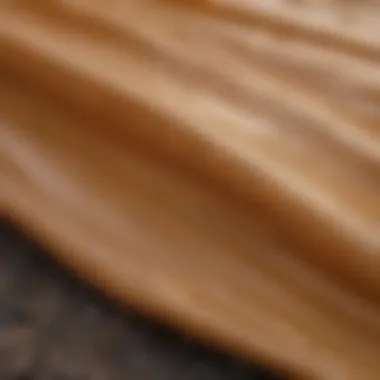

Applications of Custom Clear Tarps in Agriculture
Custom clear tarps serve several essential roles in modern agriculture. These versatile coverings offer unique benefits, catering to the diverse needs of farmers and horticulturists. Their applications go beyond mere protection; they provide crop enhancement, temperature control, and effectively extend the growing season. This section delves into the specific applications of clear tarps in agriculture, highlighting their significance and utility in enhancing productivity and sustainability.
Greenhouses and Nursery Production
Custom clear tarps play a pivotal role in greenhouse and nursery production. Their transparency allows for optimal light penetration, which is critical for photosynthesis. This light quality is essential for seedling development and overall plant health. Farmers often use these tarps to create temporary structures or even cover existing ones. By using clear tarps, it is possible to regulate the internal climate. This results in warmer temperatures during cold seasons while providing protection from harsh weather conditions.
Additionally, their ease of installation makes them a practical choice for many growers. They can be tailored to fit a variety of structures, accommodating different shapes and sizes as needed. Thus, clear tarps enhance not only growth but also the efficiency of operations.
Row Covering for Crop Protection
Row covering is another significant application of custom clear tarps. In this role, tarps protect crops from pests and adverse weather. Farmers often face challenges that threaten crop survival and yield. Custom clear tarps serve as a barrier against insects, birds, and extreme temperatures, which can damage young plants.
This method of crop protection also applies to frost-sensitive plants. By installing clear tarps over rows, farmers can effectively trap heat and raise soil temperatures, which aids in early germination. Furthermore, these tarps allow moisture to interact with plant leaves while safeguarding them from excess direct sunlight.
The ability of these tarps to enhance microclimates is noteworthy. This not only contributes to a healthier crop environment but also helps minimize the need for chemical interventions.
Temporary Structures for Livestock
The application of custom clear tarps is not limited to crops. They also serve as temporary structures for livestock. Farmers need sustainable coverings to offer shade and shelter to their animals, particularly in extreme weather. Custom clear tarps provide sufficient light while protecting livestock from the elements.
These tarps are lightweight and can be easily moved or adjusted, providing flexibility in farm operations. Their construction can effectively withstand seasonal changes, making them a pragmatic investment. Additionally, reflective properties of some clear tarps help in regulating temperature, creating a comfortable environment for animals.
In summary, custom clear tarps demonstrate versatility in agricultural applications. Whether for enhancing plant growth, protecting crops, or providing shelter for livestock, they integrate seamlessly into modern farming practices.
"Choosing the right application of custom clear tarps can significantly enhance both crop yield and livestock health."
With their adaptability and practical benefits, these tarps represent a valuable tool for farmers seeking to improve efficiency and sustainability in their operations.
Benefits of Custom Clear Tarps
Custom clear tarps offer significant advantages for agricultural practices, making them a valuable investment for farmers and horticulturists alike. Their versatile nature allows for a broad range of applications which improves efficiency in crop management while also addressing specific needs of plant growth. The benefits of these tarps can be multifaceted, encompassing aspects such as light transmission, environmental protection, and yielding quality crops. Each of these elements plays a critical role in enhancing the overall productivity of agricultural operations.
Light Transmission and Temperature Regulation
One of the most remarkable advantages of custom clear tarps is their ability to facilitate light transmission. Clear tarps provide an excellent substrate for sunlight to penetrate, allowing plants to receive the necessary light for photosynthesis. Ventilation properties of these tarps help regulate temperature beneath the canopy, which can create a more conducive environment for plant growth. Plants require particular ranges of temperature to thrive, and the use of expert-grade tarps allows farmers to optimize conditions effectively.
The design variations in these tarps can yield different light spectral transmissions, tailored to specific plant needs. For instance, shades of green or blue can have particular effects on plant hormone production. In high-temperature regions, clear tarps can also act to deflect excess sunlight, thereby lowering the risk of heat stress.
Protection Against Environmental Factors
Custom clear tarps serve as effective barriers against adverse environmental conditions. They guard against damaging rain, excessive wind, and unforeseen temperature fluctuations. This protective feature is particularly useful during the early stages of crop development, where seedlings are especially vulnerable. By covering rows or entire greenhouse areas with clear tarps, farmers can shield their investments from both natural and human-induced risks.
For example, areas prone to hail or heavy storms benefit immensely from the added protection of clear tarps. This not only ensures the safety of crops but also minimizes losses that can significantly impact a farmer's livelihood. Moreover, these tarps can effectively prevent pest infestations, thereby reducing the need for chemical treatments and promoting healthful agricultural practices.
Enhancing Crop Yield and Quality
The relationship between using custom clear tarps and crop yield quality is quite direct. By optimizing light conditions and providing necessary shelter, these tarps can assist in developing more robust, disease-resistant crops. Enhanced sunlight transmission plays a pivotal role in improving photosynthetic efficiency, which in turn boosts the growth rate of plants.
Better growth translates into higher production runs and can lead to a boost in profits for farmers. What's more, the use of tarps can extend growing seasons by providing a uniform climate, allowing for early planting or late harvesting. In many cases, this added flexibility leads to diversifying crops and maximizing land use, which can be critical for farm sustainability.
Ultimately, the benefits of custom clear tarps are multi-dimensional, influencing not just immediate crop outcomes but contributing to long-term agricultural viability. Investing in these tarps represents a commitment to enhancing productivity, safeguarding resources, and ensuring bountiful yields for the future.
"Clear tarps not only protect crops but can also enhance the overall quality and profitability of agricultural practices."
This synergy of advantages makes custom clear tarps an indispensable tool for modern agriculture.
Choosing the Right Custom Clear Tarp
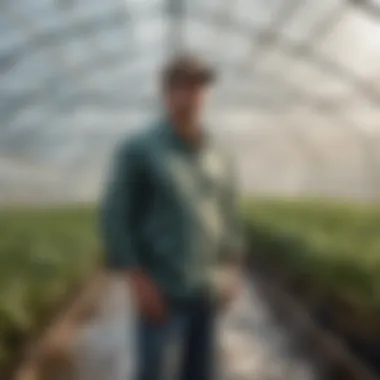

Selecting the appropriate custom clear tarp is vital for maximizing its effectiveness. Different agricultural scenarios can require various specifications. Understanding the needs of crops and the environment is a critical step. It ensures that the tarp will perform optimally in protecting plants and enhancing growth. Factors like size, material thickness, and UV protection all play a crucial role in this decision.
Determining Size and Shape Requirements
When choosing a custom clear tarp, size must align with the specific application. Measure the area that needs coverage. Keep in mind the total height, width, and length. The shape can vary from rectangular to more unique configurations based on structures like greenhouses. A properly sized tarp avoids gaps that can let in pests or minimize light effectiveness. Oversized tarps can be cumbersome and increase wind resistance.
Assessing Material Thickness and Durability
Material thickness often determines the durability of the tarp. Thicker materials can withstand harsher weather conditions. For example, a 20-mil thickness might be more suitable for exterior applications than a 10-mil thickness. Consider the longevity needs as well. A tarp exposed to direct sun will require more durability than one used in shaded areas. Assessing durability involves not just thickness, but also the quality of the material used in construction.
Understanding UV Protection Ratings
UV protection is another essential aspect when selecting a tarp. Many clear tarps come with specific UV ratings. These ratings help determine how much ultraviolet light is blocked from reaching plants. Insufficient UV shielding can harm plants, affecting growth and produce quality. Check the manufacturer’s specifications for UV ratings. A tarp with high UV protection is generally recommended for environments where plants are particularly sensitive to sunlight.
"Choosing the right tarp is not just about covering plants; it's about enhancing their potential for growth and protecting them effectively."
In summary, when selecting a custom clear tarp, clarity on size, material thickness, and UV protection is essential. These factors collectively contribute to a successful agricultural application.
Installation and Maintenance of Custom Clear Tarps
The effectiveness of custom clear tarps in agricultural settings relies heavily on their proper installation and maintenance. Incorrect installation may lead to reduced performance, while poor maintenance can shorten their life span. Understanding this topic is crucial for farmers and gardeners who want to maximize the benefits of their tarps. This section discusses essential practices in installing and maintaining these tarps to ensure they function optimally over time.
Best Practices for Installation
Installing custom clear tarps correctly is vital. Here are key practices to keep in mind:
- Secure Anchoring: Ensure that the tarp is anchored securely to prevent wind damage. Use sturdy stakes or weights at the corners and edges. This is particularly important in open fields or exposed areas.
- Avoid Overstretching: When positioning the tarp, avoid stretching it too tightly. Some flexibility allows for natural expansion and contraction due to temperature changes, which helps prevent tearing.
- Spacing and Clearance: Maintain adequate clearance between the tarp and the crops underneath. This helps in ensuring proper light transmission and air circulation, reducing the risk of overheating.
- Sealing: Use duct tape or specific sealants for any seams or junctions. This helps in preventing moisture from entering and causing damage to crops below.
General tips include checking the weather forecast prior to installation. Avoid installing during strong winds or rain, which could complicate the process.
Regular Maintenance Tips
Routine maintenance is necessary to extend the lifespan of custom clear tarps. Farmers should incorporate these practices:
- Regular Inspections: Check the tarp periodically for any signs of wear or damage. Look for small tears, discoloration, or loose fittings.
- Cleaning: Keep the tarp clean to enhance light transmission. Use a soft brush with mild soap and water. Avoid harsh chemicals that can degrade the material.
- Reinforcement: Evaluate the structural integrity of the tarp after heavy weather conditions. Reinforce any weak spots promptly to avoid bigger issues later.
- Repairs: Use tarp repair kits to fix minor tears immediately. Addressing small problems before they become significant can save costs on replacement.
Storage Recommendations for Longevity
When not in use, storage practices greatly influence the longevity of custom clear tarps. Follow these guidelines:
- Clean Before Storing: Always clean the tarp before folding it for storage. This helps in preventing mold and mildew growth, which can damage the material.
- Proper Folding: Fold the tarp neatly rather than crumpling it. This reduces the risk of creasing, which can weaken the material over time.
- Drying: Ensure the tarp is completely dry before storing. Moisture can lead to rot and other forms of deterioration.
- Cool, Dry Location: Store the tarp in a cool, dry place away from direct sunlight. Prolonged exposure to sunlight can degrade the material.
"Proper installation and maintenance of custom clear tarps not only extends their life but also maximizes their effectiveness in protecting crops."
Overall, investing time and effort into the installation and maintenance of custom clear tarps can yield considerable benefits in productivity and crop protection.
Innovations in Custom Clear Tarp Technology
Innovations in custom clear tarp technology represent a significant advancement for agricultural practices. These innovations significantly enhance the functionality and effectiveness of tarps, addressing specific needs from farmers and gardeners. This section will explore the latest developments in material science and the integration of technology within tarp usage.
Advancements in Material Science
The advancement in material science has led to the creation of more durable and effective custom clear tarps. New materials are being developed that offer better light transmission and improved resistance to environmental factors. For example, polyethylene and polyvinyl chloride are commonly used for their clarity and strength. Recent innovations enable these materials to include additives that increase their lifespan, mitigate yellowing, and even add UV protection.
Safety and sustainability are also becoming priorities in material science. Products like recycled plastic tarps are emerging, helping to reduce the environmental footprint. The use of biodegradable materials is on the rise as well, allowing farmers to utilize tarps without the long-term waste concerns associated with traditional materials.
The ability to design custom sizes and shapes is also enhanced through these advancements. Various thickness options are available, which cater to different agricultural needs, whether that's for permanent installations or temporary covers. This flexibility allows farmers to adapt to unique environmental conditions, enhancing overall productivity.
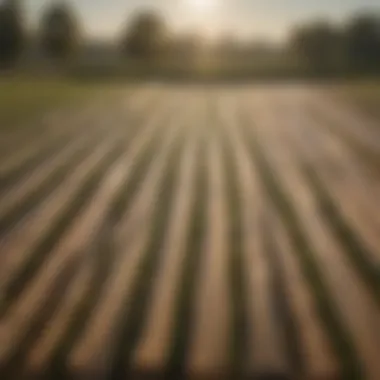
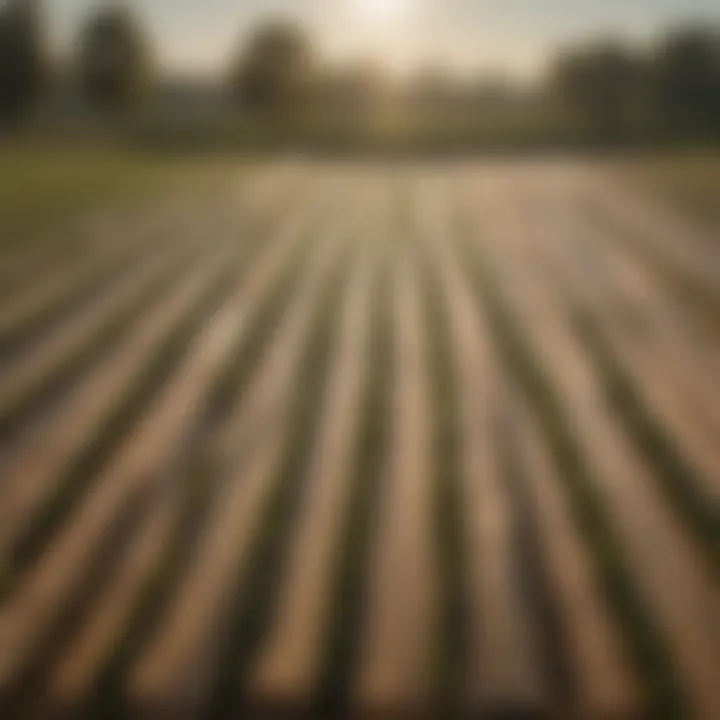
Smart Tarps: Integrating Technology
The integration of smart technology into clear tarps is revolutionizing their application in agriculture. Sensors embedded within tarps can measure temperature, humidity, and even light levels. This provides farmers with real-time data, enhancing their ability to manage crops efficiently.
Smart tarps can be connected to mobile devices or computer systems, allowing for easy monitoring and control. For instance, a farmer can adjust ventilation or irrigation systems based on the data gathered from their smart tarps. Such advancements represent a shift towards precision agriculture, where data plays a crucial role in decision-making.
Additionally, some smart tarps come with automated deployment features. This means that the tarp can expand or contract based on weather conditions, optimizing protection and resource usage.
The coupling of smart technology with traditional tarp functions presents a unique opportunity for farmers, fostering a more integrated approach to crop management.
Environmental Considerations
Environmental considerations play a crucial role in the discourse surrounding custom clear tarps. These considerations encompass the materials used, their impact on ecosystems, and the long-term sustainability of their usage. As agriculture and horticulture evolve towards more sustainable practices, understanding the environmental footprint of such products becomes imperative.
Biodegradable Options
The demand for biodegradable options in custom clear tarps is rapidly increasing. Farmers and gardeners are becoming more aware of the environmental implications of using traditional plastic tarps, which can take hundreds of years to decompose in landfills.
- Material Composition: Many companies now produce tarps that utilize biodegradable polymers. These materials can break down naturally, often within a few seasons, reducing long-term waste and pollution.
- Benefits of Biodegradability: The use of biodegradable tarps can enhance soil health by returning nutrients as they decompose. This process is not only beneficial for the immediate soil conditions but also promotes an eco-friendlier approach to agriculture.
- Practical Applications: Farmers can use these tarps in applications such as greenhouse coverings or row covers. As the tarp disintegrates, it no longer requires removal or disposal, which saves labor and prevents potential wildlife hazards from discarded plastic.
Recycling and Disposal Practices
Recycling and proper disposal of tarps is another significant environmental consideration. Each year, millions of tons of plastic waste challenge waste management systems globally.
"Proper recycling and disposal can mitigate the environmental footprint of used tarps, making a positive impact on agriculture and the planet."
- Recycling Initiatives: Several organizations now promote recycling programs specifically for agricultural plastics, including tarps. These initiatives encourage farmers to contribute their used tarps to designated recycling centers rather than discarding them.
- Best Practices for Disposal: When disposal is necessary, farmers should ensure that tarps are clean and free of contaminants. This enhances their eligibility for recycling and minimizes the impact on landfill.
- Environmental Impact of Mismanagement: Improper disposal can lead to significant environmental issues, such as pollution and harm to wildlife. Thus, understanding how to effectively manage the lifecycle of custom clear tarps is critical.
Incorporating environmental considerations into the use of custom clear tarps is vital. Both biodegradable options and responsible recycling practices contribute towards reducing the ecological footprint of agricultural activities. This awareness fosters a holistic approach to farming, aligning productivity with sustainability.
Economic Impact of Custom Clear Tarps
Custom clear tarps hold significant economic importance in agricultural practices. Their applications can lead to improved efficiency, cost savings, and enhanced productivity. Understanding the economic implications of these tarps is vital for farmers and agricultural enthusiasts looking to optimize their operations.
The effectiveness of custom clear tarps comes from their ability to create a controlled environment. This can result in better crop health and higher yields. Farmers can reduce their overall expenses on fertilizers and pest control methods. Furthermore, tarps provide various applications that protect crops from harsh weather conditions and pests, translating to significant financial benefits.
Cost-Benefit Analysis
When considering the integration of custom clear tarps, conducting a cost-benefit analysis is essential. This analysis helps in understanding the financial outlay versus the potential returns. Here are some key factors to consider:
- Initial Costs: The upfront investment in acquiring custom clear tarps should be measured against their long-term advantages. This includes the price per square foot, adaptation for specific conditions, and durability.
- Reduction in Crop Losses: By shielding crops from environmental hazards, farmers can expect a decrease in losses. This protection ensures that the investment in seeds and nurturing is not wasted.
- Increased Yields: Tarps enhance light transmission and control temperature, resulting in better growth and higher-quality produce. This can lead to higher profits in market sales.
- Operational Efficiency: The use of tarps can reduce labor costs and time spent on manual intervention, such as hand-pollination or regular pesticide application. Over time, this can lead to impressive cost savings.
The conclusion drawn from a thorough cost-benefit analysis reflects not just financial benefits but also the potential for enhanced agricultural practices.
Investment in Sustainable Practices
Investing in sustainable practices is another economic impact of custom clear tarps. These tarps promote eco-friendly methods that can lead to cost savings and better resource management:
- Reduced Chemical Use: Utilizing tarps can minimize pesticide and herbicide requirements. Fewer chemicals mean lower costs as well as a smaller environmental footprint.
- Energy Savings: By harnessing natural sunlight effectively, custom clear tarps reduce the need for artificial lighting in greenhouse settings. The less energy consumed translates directly into financial savings.
- Longevity of Resources: Since clear tarps protect crops and soil from extreme weather, there is a lesser need to replace plants or till the land frequently. This prolongs the lifecycle of resources and contributes positively to the economy.
- Market Competitiveness: Sustainable practices can also appeal to eco-conscious consumers and markets. Adopting such methods positions a farm as a leader in sustainability, potentially increasing demand for its produce and improving profit margins.
Investing in sustainable practices ultimately offers a double advantage: it helps in preserving the environment while promoting economic stability.
Finale
The conclusion of this article serves as a pivotal summary, reinforcing the importance of custom clear tarps in agricultural practices. Custom clear tarps play a significant role in enhancing productivity, managing environmental conditions, and protecting crops. As discussed throughout the article, their applications range from improving growth conditions in greenhouses to shielding crops from various weather elements. They are not just a simple cover; they are an integral part of modern agricultural strategies.
Recap of Key Points
- Definitional Clarity: Custom clear tarps are essential tools made from transparent materials, providing light while protecting the crops.
- Versatile Applications: Their use spans various agricultural contexts, including greenhouses, row covering, and temporary structures for livestock.
- Distinct Benefits: Key benefits include light transmission, temperature regulation, and protection against harmful environmental factors.
- Considerations for Selection: Factors such as size, material thickness, and UV protection ratings are critical when selecting the appropriate tarp.
- Installation and Maintenance: Proper installation and regular maintenance are crucial for maximizing the lifespan and effectiveness of the tarps.
- Environmental Aspects: Biodegradable options and responsible recycling practices can mitigate ecological impacts.
- Economic Insights: Understanding the cost-effectiveness and sustainable investments associated with tarps can aid in decision-making for farmers.
Future Trends in Tarp Usage
Looking ahead, several trends are emerging in the realm of custom clear tarps. The integration of smart technologies is one notable direction. As farmers strive for higher efficiency, tarps equipped with sensors can monitor temperature and humidity levels in real-time. This data will aid in the optimal management of agricultural environments.
Additionally, there is a growing trend toward sustainability. As environmental awareness increases, products made from biodegradable materials will find greater acceptance among conscientious farmers. Innovations in material science will likely produce stronger, more durable, and lighter tarps, improving usability.



